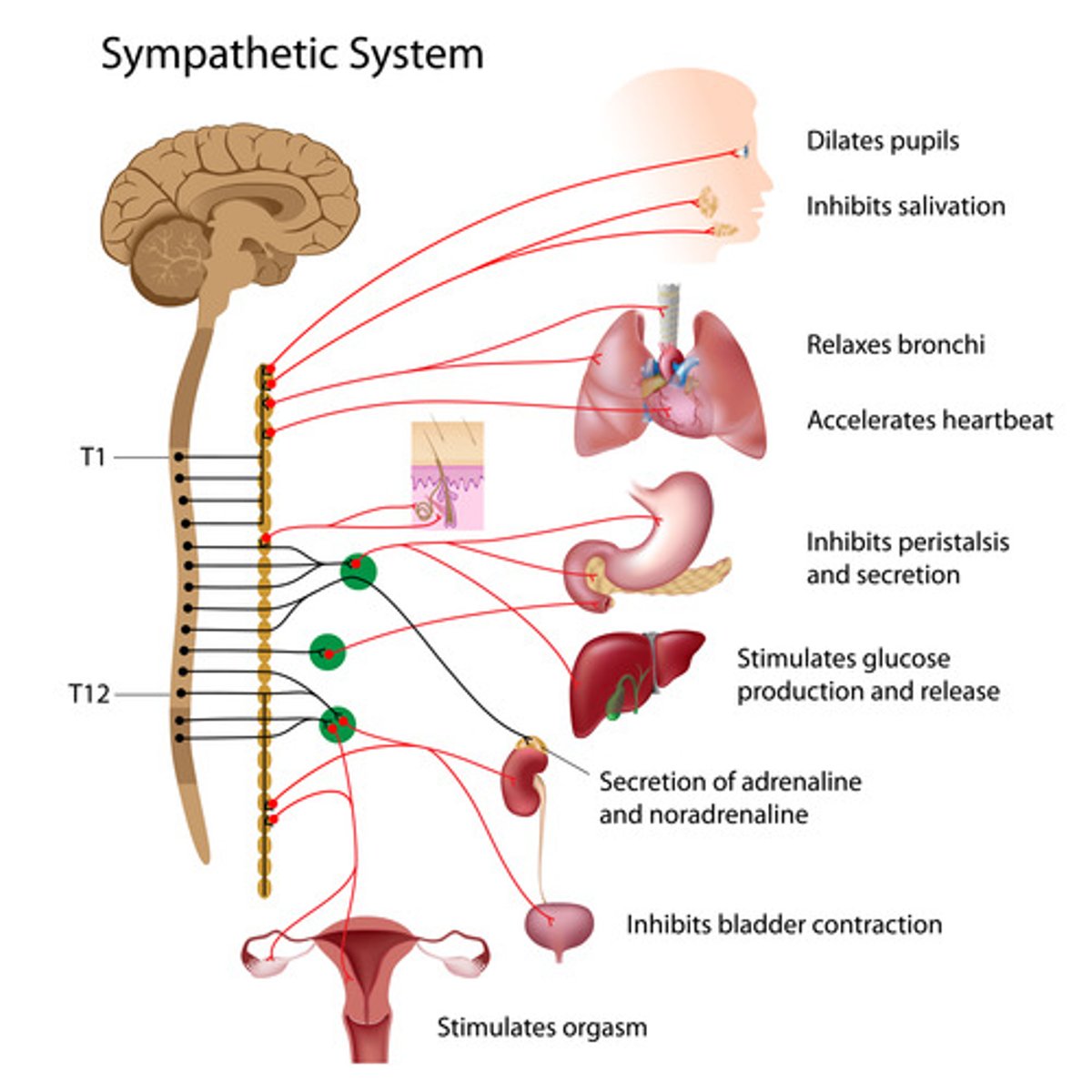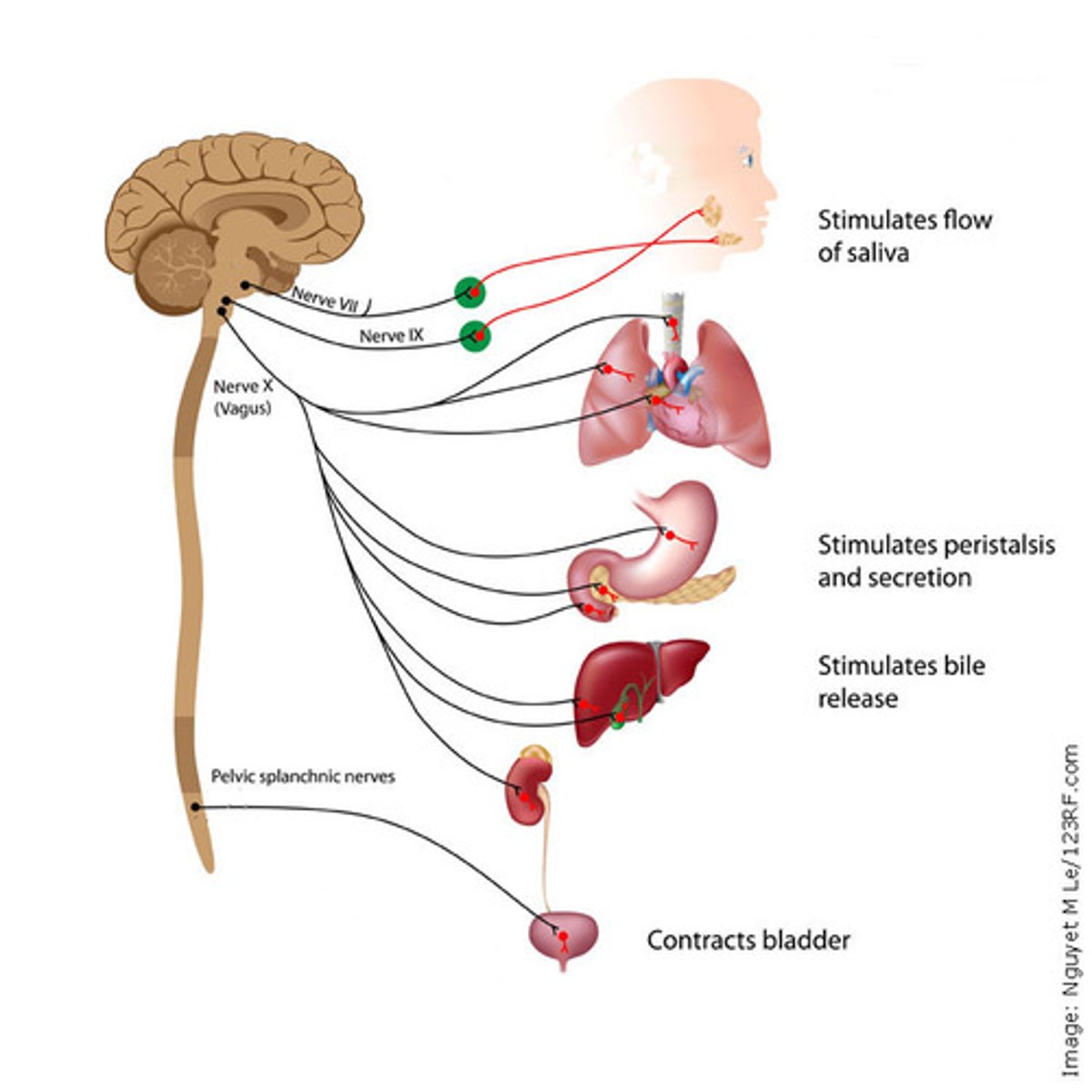Unit 1A: Nervous System, Endocrine System, and the Brain
1/97
There's no tags or description
Looks like no tags are added yet.
Name | Mastery | Learn | Test | Matching | Spaced |
|---|
No study sessions yet.
98 Terms
Nature (heredity)
Genetic characteristics that influence physical, behavioral, and mental traits.
Nurture
Environmental factors that influence physical, behavioral, and mental traits.
Genetic predisposition
an increased chance or likelihood of developing a particular disease based on the presence of 1 or more genetic variations.
Evolutionary perspective
Explores how natural selection affects the expression of behavior and mental processes to increase survival and reproductive success.
Natural selection
A process in which individuals that have certain inherited traits tend to survive and reproduce at higher rates than other individuals because of those traits.
Eugenics
When theorists have applied principles of the evolutionary perspective in ways that discriminate against others.
Twin studies
Comparisons between monozygotic (MZ or identical) twins and dizygotic (DZ or fraternal) twins
Family studies
Attempts to understand if traits/conditions run in a family.
Central nervous system (CNS)
Includes the brain and spinal cord. The central nervous system's responsibilities include receiving, processing, and responding to sensory information.
Peripheral nervous system
The part of your nervous system outside of the brain/spinal cord.
Autonomic nervous system
Regulates involuntary physiologic processes including heart rate, blood pressure, respiration, digestion, and sexual arousal.
Sympathetic nervous system
Activates your nervous system for fight-or-flight.

Parasympathetic nervous system
Calms your nervous system.

Somatic nervous system
Delivers information from your senses to your brain and commands from your brain to your muscles so you can move voluntarily.
Neurons
neural cells that transmit information, including sensory, motor, and interneurons
Glial cells
cells that provide structure, insulation, communication, and waste transport
Reflex arc
A relatively direct connection between a sensory neuron and a motor neuron that allows an extremely rapid response to a stimulus, often without conscious brain involvement.
Sensory neurons
transmits sensory information to the brain.
Motor neurons
transmits motor information from the brain.
Interneurons
connect spinal sensory and motor neurons.
Neural transmission
electrochemical communication within and between neurons and the final destination.
Action potential
a neural impulse; a brief electrical charge that travels down an axon.
All-or-nothing principle
Signal transmission between neurons is not dependent on the strength of the stimuli but, rather, only that the initial threshold is met. It fires, or it doesn't.
Depolarization
When a neuron fires, its axon loses its state of polarity as positive ions rush into the axon and negative ions rush out. This process allows a neural impulse to travel down the axon.
Refractory period
A state of recovery that occurs after a neuron has fired an action potential (it returns to its polarized state after depolarizing during firing).
Resting potential
At rest, a neuron's axon is negatively charged on the inside and positively charged on the outside. It is polarized.
Reputake
The reabsorption of neurotransmitters by the sending neuron. Some psychoactive drugs work by blocking this process.
Threshold
the level of stimulation required to trigger a neural impulse.
Multiple sclerosis
This disease damages the myelin sheath of a neuron (which insulates the axon and speeds up neural transmission). It can impact both motor and sensory functions.
Myasthenia gravis
This disease causes antibodies form against ACh (a neurotransmitter) receptors causing muscle weakness and rapid muscle fatigue.
Excitatory neurotransmitters
makes an action potential MORE likely
Inhibitory neurotransmitters
makes an action potential LESS likely
Dopamine
A neurotransmitter associated with movement, attention and learning and the brain's pleasure and reward system.
Serotonin
A neurotransmitter that affects hunger, sleep, arousal, and mood.
Norepinephrine
A neurotransmitter involved in arousal, as well as in learning and mood regulation
Glutamate
A major excitatory neurotransmitter
GABA
A major inhibitory neurotransmitter
Endorphins
"morphine within"--natural, opiatelike neurotransmitters linked to pain control and to pleasure.
Substance p
A neurotransmitter that is involved in the transmission of pain messages to the brain.
Acetylcholine
A neurotransmitter that enables learning and memory and also triggers muscle contraction.
Hormones
Chemical messengers, mostly those manufactured by the endocrine glands, that are produced in one tissue and affect another; They serve many important functions in the body, including growth and development, metabolism, and reproduction.
Adrenaline
A stress hormone known as epinephrine; It's part of the "fight or flight" response that activates the sympathetic nervous system.
Letpin
Known as the "satiety hormone" - It plays an important role in appetite and weight control because it makes a person feel full (or satiated).
Ghrelin
An appetite increaser; it is released in the stomach and stimulates the hypothalamus to increase appetite.
Melatonin
A hormone that your brain produces in response to darkness. It helps with the timing of your circadian rhythms (24-hour internal clock) and with sleep.
Oxytocin
It plays an important role in reproduction, initiating contractions before birth, and milk release. It is known as the hormone of "love and bonding."
Psychoactive drugs
Substances that, when taken in or administered into one's system, affect mental processes, e.g. perception, consciousness, cognition or mood and emotions.
Agonists
drugs that increase the action of a neurotransmitter.
Antagonists
drugs that block the function of a neurotransmitter.
Reuptake inhibitors
Drugs that interfere with the reuptake of neurotransmitters in the synapse so that a greater amount remains in the synapse. SSRIs, which treat depression, are an example.
Stimulants
Substances that cause increased neural activity.
Caffeine
a mild stimulant found in coffee, tea, and several other plant-based substances.
Cocaine
a powerful and addictive stimulant, derived from the coca plant, producing temporarily increased alertness and euphoria.
Depressants
Substances that cause decreased neural activity.
Alcohol
depressant that is the intoxicating ingredient in whiskey, beer, wine, and other fermented or distilled liquors.
Hallucinogens
Drugs that cause distortions in perception and/or cognition. They can change the way people see, hear, taste, smell or feel, and also affect mood and thought.
Marijuana
a drug, often smoked, whose effects include euphoria, impairment of judgment and concentration and occasionally hallucinations; rarely reported as addictive.
Opioids
a class of drugs that derive from, or mimic, natural substances found in the poppy plant. They work in the brain to produce a variety of effects, including pain relief.
Heroin
narcotic drug derived from opium that is extremely addictive.
Tolerance
When someone continuously abuses a substance, their body becomes used to it, meaning the drug will stop having as much of an effect.
Addiction
A state of psychological and/or physical dependence on the use of drugs or other substances, such as alcohol, or on activities or behaviors, such as sex, exercise, and gambling
Withdrawal
the discomfort and distress that follow discontinuing the use of an addictive drug.
Brainstem
The oldest part and central core of the brain, responsible for automatic survival functions.
Medulla
the base of the brainstem; controls heartbeat and breathing.
Reticular activating system
Located in the upper brain stem; responsible for maintenance of consciousness, specifically one's level of arousal.
Reward center
a dopamine-rich pathway in the brain that produces feelings of pleasure when activated.
Cerebellum
the "little brain" at the rear of the brainstem; functions include processing sensory input and coordinating movement output and balance; implicit memories are stored here.
Cerebral cortex
the intricate fabric of interconnected neural cells that covers the cerebral hemispheres; the body's ultimate control and information-processing center.
Limbic system
Includes the thalamus, hypothalamus, pituitary gland, hippocampus, and amygdala.
Thalamus
the brain's sensory switchboard, located on top of the brainstem; it directs messages to the sensory receiving areas in the cortex and transmits replies to the cerebellum and medulla.
Hypothalamus
a neural structure lying below the thalamus; directs eating, drinking, body temperature; helps govern the endocrine system via the pituitary gland and is linked to emotion.
Pituitary gland
The endocrine system's most influential gland. Under the influence of the hypothalamus, the pituitary regulates growth and controls other endocrine glands.
Hippocampus
A neural center located in the limbic system that helps process explicit memories for long-term storage.
Amygdala
A limbic system structure involved in memory and emotion, particularly fear and aggression.
Corpus callosum
the large band of neural fibers connecting the two brain hemispheres and carrying messages between them.
Occipital lobes
portion of the cerebral cortex lying at the back of the head; includes areas that receive information from the visual fields.
Temporal lobes
portion of the cerebral cortex lying roughly above the ears; includes the auditory areas, each receiving information primarily from the opposite ear.
Parietal lobes
portion of the cerebral cortex lying at the top of the head and toward the rear; receives sensory input for touch and body position.
Association areas
areas of the cerebral cortex that are not involved in primary motor or sensory functions; rather, they are involved in higher mental functions such as learning, remembering, thinking, and speaking.
Somatosensory cortex
area at the front of the parietal lobes that registers and processes body touch and movement sensations.
Frontal lobes
the portion of the cerebral cortex lying just behind the forehead; involved in speaking and muscle movements and in making plans and judgments.
Linguistic processing
the way humans use words to communicate ideas and feelings, and how such communications are processed.
Higher-order thinking
goes beyond basic observation of facts and memorization; is necessary for critical thinking.
Executive functioning
the cognitive abilities and processes that allow humans to plan or inhibit their actions.
Prefrontal cortex
the frontmost portion of the frontal lobes, especially prominent in humans; important for attention, working memory, decision making, appropriate social behavior, and personality.
Split-brain research
Surgical cutting of the corpus callosum to study the effects of disconnecting the right and left brain hemispheres - specifically, the independent functioning of the two hemispheres.
Hemispheric specialization
The control of distinct neurological functions by the right and left hemispheres of the brain.
Broca's area
Controls language expression - an area of the frontal lobe, usually in the left hemisphere, that directs the muscle movements involved in speech.
Wernicke's Area
controls language reception - a brain area involved in language comprehension and expression; usually in the left temporal lobe.
Broca's aphasia
condition resulting from damage to Broca's area, causing the affected person to be unable to speak fluently, to mispronounce words, and to speak haltingly.
Wernicke's aphasia
condition resulting from damage to Wernicke's area, causing the affected person to be unable to understand or produce meaningful language.
Aphasia
impairment of language, usually caused by left hemisphere damage either to Broca's area (impairing speaking) or to Wernicke's area (impairing understanding).
Contralateral hemispheric organization
Opposite side communication between the brain and the body (the left side of the brain controls the right side and vice versa). Example: For touch and movement, the left side of the brain controls the rights side of the body (a vice versa).
Plasticity
the brain's ability to change, especially during childhood, by reorganizing after damage or by building new pathways based on experience.
EEG
Measures the levels of electrical activity in the brain and records brain waves; often used in sleep research.
fMRI
Reveals the structure AND functioning of the brain; indicates blood flow—where oxygen is being consumed in the brain.
Lesioning
brain tissue is selectively destroyed by radiation, thermo-coagulation, freezing, or cutting.
Motor cortex
an area at the rear of the frontal lobes that controls voluntary movements.